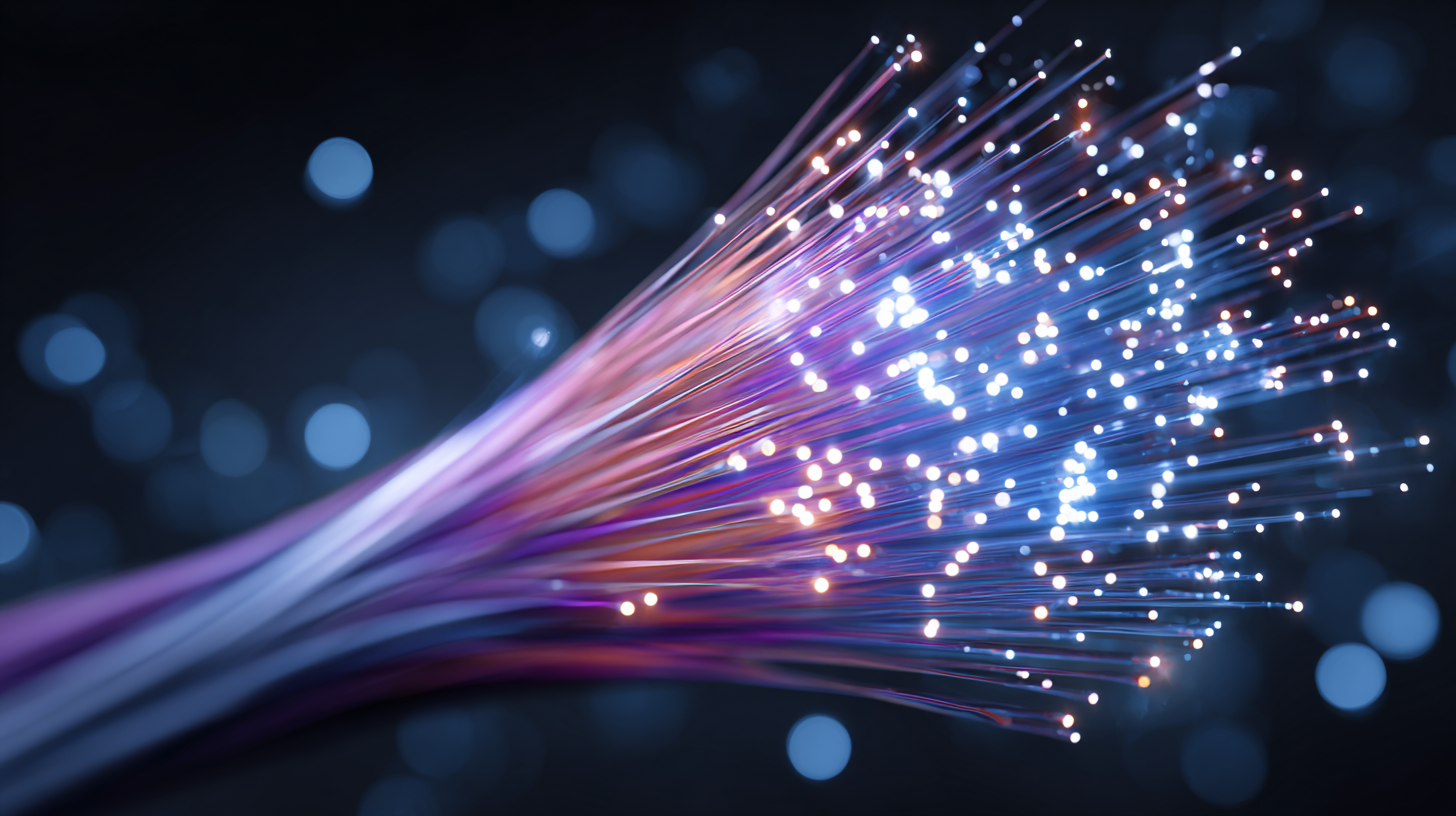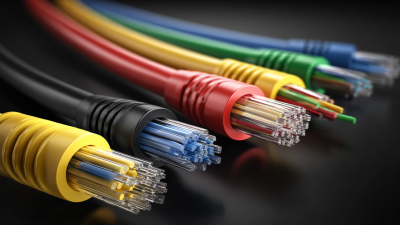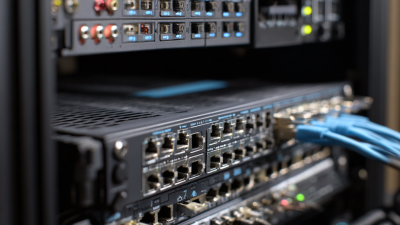Industries
Get direct access to our extensive portfolio of optical products and specialist technical expertise.
Get direct access to our extensive portfolio of optical products and specialist technical expertise.
As the demand for high-speed internet and seamless connectivity continues to grow, the future of communication technology increasingly hinges on advancements in optical fiber cable network solutions. This innovative medium not only facilitates faster data transmission but also enhances bandwidth capacity, allowing for a more reliable and efficient exchange of information across vast distances. In an era where remote work, online learning, and digital services are becoming the norm, understanding the potential of optical fiber cables becomes crucial. This article will explore various innovations within this domain, highlighting how emerging technologies and network solutions are shaping the landscape of connectivity. By examining the latest trends and developments, we aim to provide insights into how businesses and individuals can leverage these advancements to improve their communication experiences and prepare for a highly interconnected future.

Optical fiber technology has revolutionized the way we connect and communicate. At its core, this technology utilizes light to transmit data over long distances with remarkable speed and efficiency. Unlike traditional copper cables, optical fibers are immune to electromagnetic interference, allowing for a cleaner and faster transmission of information. This capability is essential in our increasingly digital world, where data demands continue to grow exponentially.

Tips: When considering an upgrade to an optical fiber network, research different types of fibers, such as single-mode and multi-mode, to determine which best suits your specific needs. Additionally, ensure that your infrastructure can support the installation of fiber optics, as it often requires specialized equipment and expertise.
The importance of optical fiber technology extends beyond just speed. It is also more secure than many other forms of communication, making it the preferred choice for businesses handling sensitive data. With the rise of cloud computing and remote work, investing in an optical fiber network can significantly enhance performance and security, thus keeping organizations competitive.
Tips: Always consult with a professional network engineer when planning your optical fiber installation to maximize efficiency and minimize costs. Regular maintenance and updates are also crucial to ensure that your network continues to perform at optimal levels.
Innovative fiber cable solutions are revolutionizing the way we connect and communicate, enhancing both speed and reliability in data transmission. As the demand for high-speed internet continues to rise, advancements in optical fiber technology are meeting this need by offering greater bandwidth and lower latency. Modern fibers are now designed with improved materials and construction techniques that significantly reduce signal loss, making long-distance communications more efficient than ever.
In addition to speed, reliability is a critical factor in connectivity solutions. Innovations such as bend-insensitive fibers and advanced protective coatings are being developed to withstand harsh environmental conditions and physical stresses. These enhancements result in a more robust network infrastructure that can maintain performance under various circumstances, ensuring uninterrupted service. As telecom providers and consumers increasingly depend on high-quality connections for everything from streaming media to critical business operations, the role of innovative fiber cable solutions in enhancing our digital lives becomes even more vital.
| Solution Type | Maximum Speed (Gbps) | Distance (km) | Deployment Time (months) | Maintenance Frequency (years) |
|---|---|---|---|---|
| Single-mode Fiber | 100 | 80 | 6 | 5 |
| Multi-mode Fiber | 40 | 300 | 4 | 3 |
| Ribbon Fiber | 200 | 500 | 12 | 4 |
| Armored Fiber | 10 | 200 | 3 | 2 |
| Outdoor Fiber | 50 | 100 | 5 | 3 |
As the demand for high-speed connectivity continues to surge, optical fiber networks are poised for significant innovations. Trends indicate that the global market for adaptive fiber optic transceivers is likely to expand, propelled by advancements in technology and increasing data rate requirements. By 2032, the market is expected to exhibit substantial growth, driven by various types of transceivers, notably fixed and hot-swappable ones. This progress is further underpinned by the digital transformation fueling the demand for faster and more reliable communication networks.
Tips: To leverage these advancements, organizations should consider adopting cutting-edge optical technologies and investing in smart operation systems. Embracing the latest fiber optics solutions can help reduce deployment costs while enhancing overall network performance. Furthermore, staying informed about emerging trends, such as the projected growth of the DWDM market from $13.87 billion in 2025 to $24.45 billion by 2032, is critical for making strategic decisions in connectivity.
The emphasis on smart sensing technologies within optical networks highlights the industry's shift towards integrated solutions that enhance user experience. Events like the recent online seminar on intelligent sensing fiber technology reflect a growing recognition of the need for innovation in this field. This momentum suggests that the future of fiber optic networks will not only fulfill high-speed requirements but also offer smarter, more efficient connectivity options.

Implementing an optical fiber infrastructure requires careful planning and consideration to ensure a successful deployment. One of the key considerations is assessing the specific needs of the area being served. Factors such as existing urban infrastructure, future growth projections, and potential user density should be analyzed to determine the most suitable fiber architecture. Collaborating with local stakeholders can also provide insights into community needs and help mitigate future challenges.
Tips: When designing your optical fiber network, always prioritize scalability. Choose modular components that allow for easy upgrades and expansions as demand increases. Additionally, conduct thorough site surveys to identify any potential obstacles that could impede installation.
Another critical aspect to consider is the maintenance and management of the optical fiber network. Establishing a robust monitoring system will help track performance and quickly identify issues. Regular training for technical staff is also essential to ensure they are well-equipped to handle any challenges that arise.
Tips: Make sure to invest in quality materials and equipment. Cutting corners on fiber optics can lead to significant headaches down the line. Look for reputable suppliers and consider establishing a routine maintenance checklist to keep your network in peak condition.
The integration of optical fiber with emerging technologies is poised to revolutionize connectivity across various sectors. As industries increasingly rely on high-speed data transmission, the synergy between optical fibers and technologies such as 5G, the Internet of Things (IoT), and artificial intelligence (AI) becomes critical. High-capacity optical fiber networks can support the massive data requirements generated by interconnected devices, enabling seamless communication and real-time data processing. This combination not only enhances network efficiency but also paves the way for innovative applications in smart cities, telemedicine, and remote work environments.
Furthermore, the deployment of optical fiber in conjunction with machine learning algorithms can optimize network management and performance. By leveraging AI, network operators can analyze traffic patterns, detect anomalies, and automatically adjust bandwidth allocation to ensure optimal user experience. Additionally, as augmented reality (AR) and virtual reality (VR) gain traction, robust optical fiber infrastructure will be essential to deliver the low-latency connections required for immersive experiences. The fusion of these technologies signals a new era of connectivity where the potential for real-time communication and advanced applications is virtually limitless.





